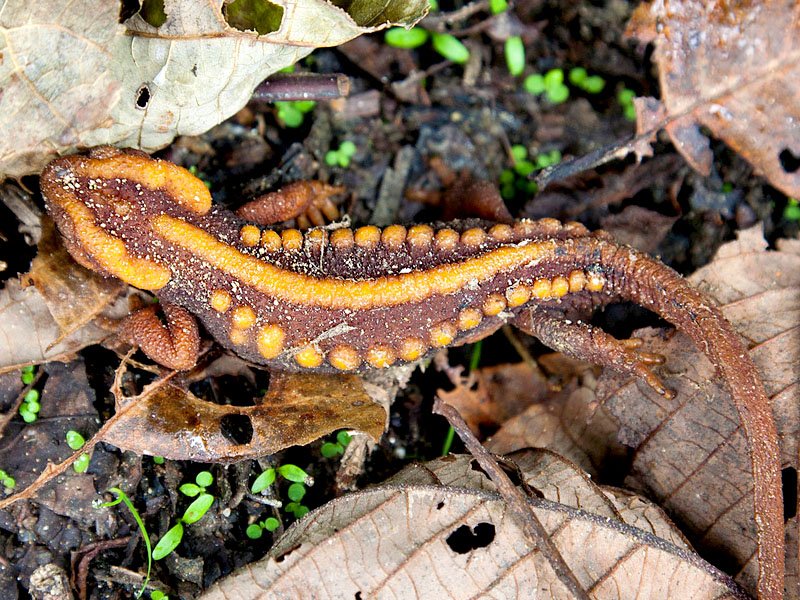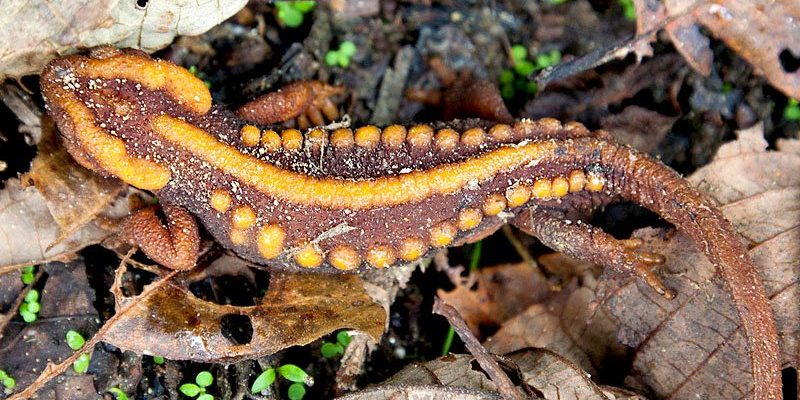
First, it’s important to understand that salamanders belong to a group of amphibians often found in damp environments. They can vary widely in size, color, and habitat preferences. Some species are known for their bright colors, which can be striking but also serve as a warning sign. When you dig deeper, you’ll discover just how fascinating and intricate these little creatures—and their potential dangers—can be.
Understanding Salamander Species
Salamanders belong to the order Caudata, which encompasses over 700 species. They can typically be found in moist habitats, including forests, wetlands, and even backyards. Among these species, some are completely harmless, while others have unique adaptations that may make them dangerous.
For instance, the Eastern Tiger Salamander is one of the most recognizable species due to its bold yellow and black markings. While it might look intimidating, this salamander is generally harmless to humans. On the other hand, the Spanish Ribbed Newt has a more alarming reputation. Its ribbed exterior can release toxins, leading to irritation if someone were to handle it carelessly.
You might be wondering: how do these variations influence the potential risk to humans? The answer lies in their *defensive mechanisms*. Some salamanders, like the newt, have developed toxicity to deter predators. This is where the danger can come into play, especially if a curious child or pet decides to interact with one.
The Toxicity of Certain Salamanders
Not all salamanders are created equal when it comes to toxicity. Some species, like the California Newt, produce toxic secretions that can cause serious effects if ingested. These toxins can lead to symptoms like nausea, vomiting, and even more severe reactions in sensitive individuals.
So, how does this toxicity work? Essentially, these salamanders secrete chemicals through their skin that serve as a deterrent against predators. This defense mechanism can also pose risks to humans who may not be aware of the potential danger. While touching these creatures might not always lead to harm, ingesting any part of them can lead to severe health issues.
When engaging with wildlife, understanding and respecting the boundaries is crucial. If you happen to encounter a salamander, observing it from a distance is the best approach. You’ll not only keep yourself safe but also allow the creature to live peacefully in its environment.
Salamanders and Disease Transmission
Another aspect to consider is the potential role that salamanders can have in disease transmission. Besides their toxicity, some species are known carriers of specific pathogens that could affect humans. For example, the chytrid fungus is a well-documented pathogen particularly harmful to amphibians but can also present risks to wetlands and ecosystems where humans interact.
Although direct transmission of disease from a salamander to a human is rare, it’s essential to practice good hygiene after handling any wildlife. This precaution helps prevent any chance of carrying pathogens from the animal to human environments. Always wash your hands thoroughly after any interaction with nature, especially if you’re exploring areas where amphibians are present.
It’s worth noting that amphibians, including salamanders, have been experiencing dramatic population declines globally. Protecting their habitats not only aids these creatures but helps maintain the balance of our ecosystems, which ultimately benefits human health too.
Signs of Salamander Poisoning
In the rare event that someone comes into contact with a toxic salamander, knowing the symptoms can be crucial. Signs of poisoning might include:
- Nausea or vomiting
- Abdominal pain
- Rashes or irritation on the skin
- Dizziness or confusion
If you or someone nearby exhibits these symptoms after contact with a salamander, it’s essential to seek medical attention immediately. Always take these situations seriously, as the effects can vary based on the individual’s sensitivity to the toxins involved.
Just remember, while the majority of salamanders are harmless and play vital roles in their ecosystems, a few species come with cautionary tales that warrant respect.
How to Handle Salamanders Safely
If you find yourself in a situation where you want to interact with salamanders, safety is key. Here are some guidelines to keep in mind:
1. Observe from a distance. Use binoculars or a camera to appreciate these creatures without getting too close.
2. Do not touch. If you must handle a salamander, wear gloves to avoid direct contact with their skin.
3. Educate others. Share the importance of treating wildlife with respect and the risks involved when dealing with potentially toxic species.
By following these simple steps, you can enjoy the beauty of salamanders while reducing any risk to yourself or the animal.
So, can salamanders be dangerous to humans? The answer is nuanced. While most species are harmless, a few can certainly pose risks, especially if mishandled. Understanding which species are toxic and practicing safe interactions can help you appreciate these fascinating creatures without fear.
Next time you spot a salamander, take a moment to marvel at its beauty and the unique role it plays in our ecosystems. Remember, being informed and cautious is the best way to coexist peacefully with our amphibious friends.

